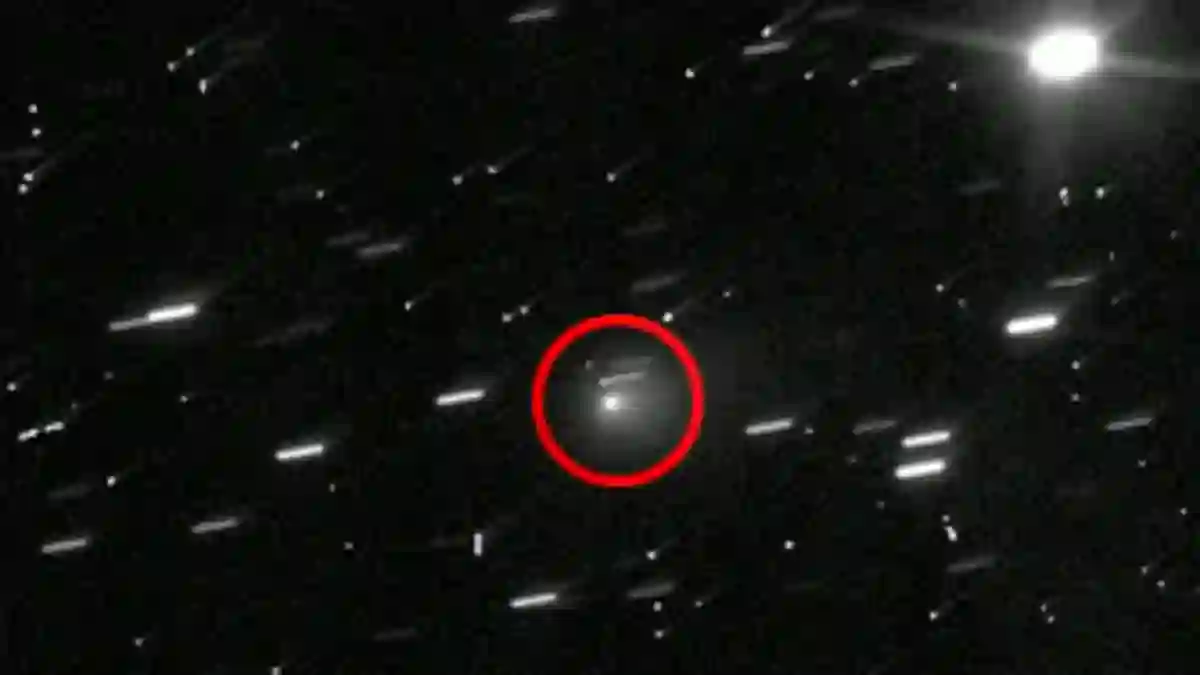Imagine this: a massive object from deep space is zooming toward our solar system—and a Harvard astrophysicist believes it might not be a natural visitor at all.
That’s the startling claim from Professor Avi Loeb, who’s no stranger to the UFO debate and is now back with new findings that are sure to stir curiosity and concern.
A Strange Path That’s Hard to Ignore
The object in question, named 3I/ATLAS, was first thought to be just another comet.
But Loeb and his team say it’s anything but ordinary. It’s taking a highly unusual route through space—one that will bring it close to Venus, Mars, and Jupiter.
According to Loeb, the odds of a regular space rock naturally taking this path are less than 0.005 percent.
That rarity has led him to float a bold possibility: 3I/ATLAS could be an alien spacecraft, possibly sent here by an unknown intelligent civilization.
What If It’s Not Friendly?
Loeb isn’t saying this lightly. In fact, he and his colleagues warned in a recent paper that if this really is a probe sent by intelligent beings, its purpose could go one of two ways—peaceful curiosity or hostile intent.
Their warning draws from a rather grim idea known as the dark forest hypothesis—a theory that suggests other advanced civilizations may be out there, but they stay quiet to avoid attracting attention from potentially aggressive species… like us.
Loeb puts it bluntly: if the object’s purpose turns out to be dangerous, humanity may need to consider defensive action, although he admits such efforts might be futile.
Loeb’s Longstanding UFO Curiosity
This isn’t the first time Loeb has made headlines with extraterrestrial theories.
Back in 2021, he proposed that another space object, Oumuamua, was also likely an alien probe.
That cigar-shaped body zipped through our solar system and had odd features, like changing speeds without any gravitational explanation.
Loeb has also been vocal at official events—he was even a keynote speaker at a congressional hearing on UFOs in May, where he stressed that some aerial phenomena simply can’t be explained by current science.
Space Debris with a Mysterious Past
On top of that, Loeb has led expeditions to recover fragments from a 2014 interstellar meteor that crashed into the Pacific near Papua New Guinea.
He claims up to 10 percent of the metal found contains unusual materials not typically found in our solar system—another possible clue pointing to non-human technology.
3I/ATLAS Raises Even More Red Flags
Now, back to 3I/ATLAS. Loeb and researchers Adam Drowl and Adam Hibberd, working with the Initiative for Interstellar Studies, recently discovered more oddities about this object.
For starters, it’s enormous—anywhere from 7 to 12 miles long, dwarfing Oumuamua by a long shot.
Even more bizarre? It doesn’t have the usual glowing cloud of gas and dust, called a coma, that surrounds comets.
Without that, the team argues, it probably isn’t a comet at all.
When you combine its strange trajectory, immense size, lack of a coma, and its origin from the thicker part of the Milky Way, Loeb says it’s becoming harder to dismiss the idea that this thing could be artificial.
A Visit Just in Time for the Holidays
If you’re wondering when this cosmic visitor will arrive—mark your calendars.
December 17 is when 3I/ATLAS is expected to make its closest approach to Earth, zooming by at a wild 150,000 miles per hour.
It won’t come dangerously close—it’s expected to stay about 223 million miles away, which is roughly 2.4 astronomical units (the distance from Earth to the Sun).
Still, space scientists are watching it closely.
Before then, it’ll swing close to Mars in October, passing within 37 million miles of the red planet.
It’s Older Than the Sun and Traveling Fast
This interstellar visitor isn’t new to the cosmos.
Loeb’s analysis shows that 3I/ATLAS is older than our own Sun, which is about 4.6 billion years old.
According to a study published in Astronomy & Astrophysics, it took around 800 million years for the object to make its way here from a dense region of the Milky Way.
So, What Happens Next?
Loeb’s latest paper, currently available on arXiv (a pre-print platform), hasn’t been peer-reviewed yet—but that hasn’t stopped the buzz.
Whether this object turns out to be an alien probe, a never-before-seen type of comet, or just a cosmic anomaly, scientists and space enthusiasts will be watching it very closely in the months ahead.
As Loeb puts it: if we truly keep an open mind, there’s plenty of reason to believe 3I/ATLAS might be something far more fascinating than a chunk of rock.
